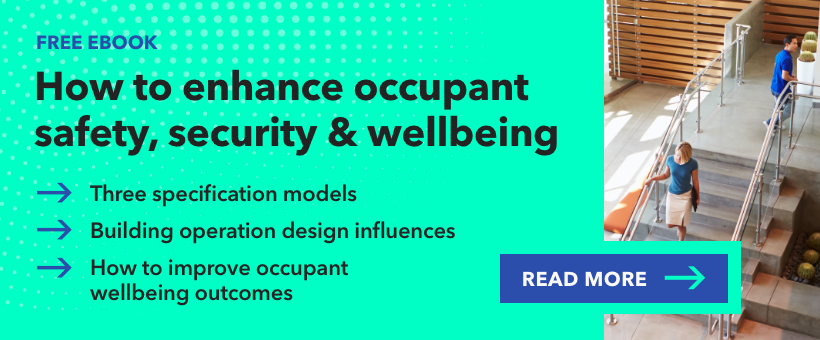Most businesses operating in corporate buildings welcome guests on a regular basis. Clients come in for meetings, candidates interview at the office, maintenance operators come in to fix problems, and on occasion, family and friends or staff members may pop in for a visit.
Keeping track of all these comings and goings in the office can be difficult to manage, but knowing who is in the building at all times is essential for ensuring occupant safety. Frequent visitors can make you more vulnerable to theft and other criminal activity that could threaten the safety of staff.
Many businesses still rely on outdated measures, such as visitor sign-in sheets. However, technology tools can make visitor management safer and more efficient. In a post-Covid workplace, these technologies will be more important than ever to address heightened safety and wellbeing concerns.
What is visitor management?
Visitor management refers to all the processes involved in welcoming, processing and keeping track of visitors to a building. A visitor management system (VMS) is the technology used to track and manage guests to ensure the safety and security of everyone in the building.
A VMS can be integrated with existing security systems, such as access control and speed lanes, providing enhanced safety and security assurance.
Access control for visitor management
Many businesses already use access control for tracking and monitoring staff coming and going within their building, but it can be used for visitors too. Integrating an access control system with a VMS provides enhanced safety and security. There are other benefits too, including fewer administrative tasks for reception staff and a smoother visitor experience.
Access control for visitors should be simple, safe and reliable. However, issuing keycards or guest badges for visitors to use can be risky as they may forget to return them before leaving, which leaves the building open to security risks.
Ensuring a contactless visitor experience
A smarter alternative is to provide digital visitor passes via email or SMS. Visitor credentials can be set to expire at a certain time, for example after 2 hours, depending on how long the visitor is expected to be in the building. It’s also possible to add permissions only to specific areas of the building.
Contactless access control ensures a safe, hands-free experience for visitors, which is particularly important as buildings welcome people back after Covid-19. There are no keycards to sanitise or key codes to press. Visitors can simply show their digital pass using their smartphone.
Health screening
Additional safety measures can also be included at visitor check-in. Routine questionnaires for visitors looking at whether they have tested positive for Covid-19 or are experiencing symptoms are likely to become commonplace as an extra level of safety. These screening questionnaires could be completed on a mobile device or at home before even arriving at the building.
Whilst the pandemic is still in effect, screening measures such as fever scanning using thermal sensing systems can be used to screen building entrants to further enhance occupant safety. Acting as an initial check, a quick scan with a thermal camera can establish whether a visitor is safe to enter the building.
Rather than being a nuisance for visitors, these safety measures signal that the organisation cares about its people and their guests.
Benefits of visitor management
A good VMS has a multitude of other benefits, including:
- Enhanced workplace safety - Contactless check-in process with touchless access points and additional safety measures such as health screening helps visitors and staff to feel and be safe.
- Improved efficiency - No more sign-in sheets and stacks of keycards to hand out. Visitors can access the building with their smartphone. Meeting booking systems can even be synced with the VMS so any change of visitors or meeting times can be updated automatically so there’s no need for manual updates.
- A more personalised visitor experience - Visitors no longer have to queue at reception during peak times to gain access to the building. They can also be sent out a branded invite that tells them where to go, making the visitor journey simple, smooth and personalised.
- Ensures emergency evacuation - A good VMS can tell you the exact number of people within the building at any given time. This means that in the case of an emergency, first responders can use the data to identify everyone on-site and ensure they are all evacuated or accounted for.
- Increased compliance - The manual process of collecting visitor data can be subject to risk. With a good VMS, visitor data is handled securely and properly.
- Optimised capacity - Through a VMS it is possible to monitor occupancy and ensure the space is optimised for social distancing.
In a post-Covid world, occupant safety and wellness is of paramount importance. With a good VMS, integrated with access control and safety measures such as health screening, you can optimise the safety of everyone in the building, including both staff and visitors.





 Previous Blog
Previous Blog

Comments.